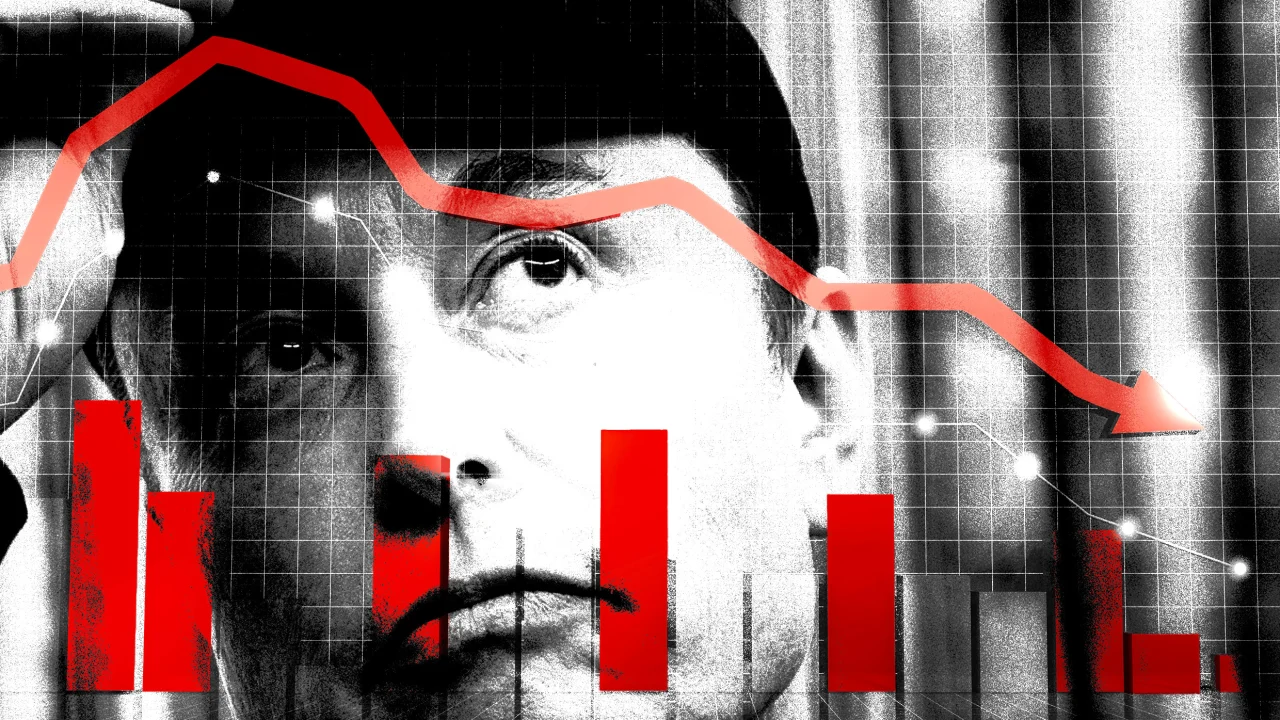What Is an Inventory Retailer and How Do They Operate?

An inventory retailer is a business that buys and holds products to sell directly to consumers. They play a vital role in the supply chain, balancing stock levels with customer demand. By employing various inventory control techniques and technology, these retailers aim to optimize their operations. Comprehending how they manage stock and respond to market trends is fundamental for grasping their impact on the retail environment. What strategies do they use to guarantee efficiency and customer satisfaction?
Key Takeaways

- Inventory retailers purchase and hold goods to sell directly to consumers, acting as a bridge between suppliers and customers.
- They utilize effective inventory management to maintain ideal stock levels, reduce costs, and meet customer demand.
- Key strategies include demand forecasting, Just-in-Time (JIT) ordering, and ABC analysis to optimize inventory performance.
- Technology plays a crucial role, with automation, real-time tracking, and predictive analytics enhancing inventory control and efficiency.
- Challenges include inaccurate demand forecasting, supply chain disruptions, and competition from larger retailers, impacting profitability and operational effectiveness.
What Is an Inventory Retailer?

An inventory retailer is a business that plays a pivotal role in the supply chain by purchasing and holding goods to sell directly to consumers.
These retailers manage inventory levels effectively to meet customer demand whilst minimizing costs. They often use advanced inventory management systems to track stock levels, sales, and reorder points. This efficient stores management guarantees that products are available when needed, enhancing customer satisfaction.
Various inventory methods, like the retail inventory method, help retailers assess the value of their stock efficiently. Moreover, strategies such as Just-in-Time (JIT) and Economic Order Quantity (EOQ) are commonly adopted to optimize inventory processes, preventing stockouts and reducing excess inventory costs, ultimately improving profitability.
The Role of Inventory in Retail Operations

Inventory plays a pivotal role in retail operations, acting as the backbone of a retailer’s ability to meet customer needs and drive profitability. As a critical asset, it represents the goods available for sale, directly impacting your cash flow.
Effective inventory management helps you maintain ideal stock levels, ensuring you meet consumer demand as well as minimizing costs linked to overstocking and stockouts. Retailers often utilize accounting inventory methods like Just-in-Time (JIT) and Economic Order Quantity (EOQ) to streamline ordering processes.
Furthermore, accurate inventory tracking through technology improves operational efficiency and boosts sales forecasts. Regular inventory audits and analysis of key performance indicators, such as inventory turnover rates, allow you to assess inventory performance and make informed decisions in retail accounting for future stock management.
Key Strategies Used by Inventory Retailers

In terms of managing inventory effectively, retailers often rely on key strategies like demand forecasting and inventory control techniques.
By anticipating customer needs, you can adjust stock levels to keep popular items available as well as avoiding overstock situations.
Implementing these strategies not only improves efficiency but likewise supports better decision-making in your inventory management processes.
Inventory Control Techniques
Effective inventory control techniques are essential for retailers aiming to enhance their operations and reduce costs.
One popular strategy is Just-in-Time (JIT) inventory management, which minimizes holding costs by ordering goods only as needed.
The Economic Order Quantity (EOQ) method helps you calculate the ideal stock amount, balancing order and holding costs.
ABC analysis allows you to categorize inventory into three groups based on value and turnover rate, focusing your efforts on high-value items that drive revenue.
Cycle counting guarantees accuracy by regularly counting a portion of your inventory, whereas safety stock acts as a buffer against unexpected demand.
Using the retail method of accounting, you can effectively manage your cost to retail percentage and maintain profitability.
Demand Forecasting Methods
Successful inventory control techniques lay the groundwork for effective demand forecasting methods, enabling retailers to align their stock levels with customer needs.
Inventory retailers often analyze historical sales data to spot purchasing patterns, improving accuracy in predicting future demand. Utilizing market trend evaluations, they monitor consumer behavior and industry shifts, adapting inventory strategies accordingly.
Predictive analytics tools as well improve demand forecasting, allowing retailers to manage vast datasets. Techniques like the conventional retail inventory method and ABC analysis help categorize inventory by sales velocity, ensuring high-demand items are prioritized for replenishment.
Moreover, implementing supplier performance reviews alongside these retail store accounting methods helps maintain reliable stock levels, mitigating risks associated with potential supply chain disruptions.
How Inventory Retailers Manage Stock Levels

Inventory retailers manage stock levels through a combination of strategic techniques designed to align inventory with customer demand. They rely on accurate forecasting to predict future sales and adjust their stock accordingly, preventing overstocking.
Here are some key methods they use:
- Just-in-Time (JIT): Minimizes inventory costs by ordering stock only as needed.
- Economic Order Quantity (EOQ): Optimizes order size to balance ordering and carrying costs.
- Cycle Counts: Regular inventory checks to maintain accuracy and resolve discrepancies.
- Performance Analysis: Evaluating KPIs like inventory turnover and sell-through rates to identify slow-moving items.
The Importance of Accurate Inventory Tracking

Accurate inventory tracking is crucial for retailers aiming to meet customer demand efficiently during cost minimization. By maintaining ideal stock levels, you can guarantee products are available, reducing the risk of stockouts that lead to lost sales and dissatisfied customers.
Effective inventory tracking likewise helps lower carrying costs, as it prevents overstock situations that incur extra expenses like storage and spoilage. Regular inventory audits and cycle counting verify the accuracy of records, allowing you to identify discrepancies and prevent shrinkage from theft or miscounting.
With real-time data, you can analyze sales trends and make informed decisions regarding purchasing, promotions, and pricing strategies, ultimately enhancing your profitability and operational efficiency.
Technology in Inventory Management

In terms of managing inventory effectively, technology plays an essential role.
You’ll find that software solutions automate tracking and forecasting, which helps you maintain ideal stock levels with fewer errors.
Moreover, incorporating RFID and barcode systems along with predictive analytics tools can greatly improve your inventory processes and decision-making capabilities.
Inventory Management Software Solutions
Effective inventory management software solutions play a crucial role in optimizing retail operations by streamlining various processes, such as tracking stock levels, managing orders, and overseeing deliveries.
Utilizing these tools can greatly improve your operational efficiency. Here are some key benefits of implementing inventory management software:
- Real-time tracking: Monitor stock levels and sales instantly, reducing manual errors.
- Demand forecasting: Use historical sales data to optimize inventory and minimize stockouts.
- Integration capabilities: Connect seamlessly with POS systems and e-commerce platforms to maintain accurate records.
- Cloud-based access: Manage inventory remotely, which is especially useful for businesses with multiple locations.
RFID and Barcode Systems
To further improve inventory management practices, retailers increasingly turn to RFID and barcode systems, which provide advanced technology for tracking and managing stock.
RFID, or Radio Frequency Identification, uses electromagnetic fields to automatically identify and track tags attached to products, allowing for real-time inventory management and reducing manual counting errors.
In comparison, barcode systems consist of parallel lines that represent data, enabling quick scanning at point-of-sale and during inventory counts.
While RFID can read up to 1,000 tags per second, barcode scanners typically read one item at a time.
Implementing RFID can reduce inventory shrinkage by 30% to 50%, but barcode systems are more cost-effective for small to medium-sized retailers, with scanners costing between $100 and $500.
Predictive Analytics Tools
Predictive analytics tools are revolutionizing inventory management by using historical sales data and market trends to anticipate future inventory needs.
These tools leverage machine learning algorithms to analyze patterns, boosting accuracy and reducing stockouts. By integrating predictive analytics with your inventory management system, you can automate reordering processes based on anticipated sales, optimizing cash flow and minimizing holding costs.
Here are some key benefits:
- Improved stock replenishment strategies.
- Identification of slow-moving and fast-selling items.
- Proactive responses to changes in consumer behavior.
- Enhanced decision-making based on accurate forecasts.
Estimated Inventory Value Calculation

When calculating estimated inventory value, it’s vital to understand the process of determining the cost of goods available for sale over a specific period. You start by adding your beginning inventory to all purchases made during that time.
To compute the ending inventory value, applying the cost-to-retail ratio is common; you find this ratio by dividing the cost of goods available for sale by their total retail value. Many retailers use the retail inventory method (RIM) for efficiency, especially when the cost-to-retail ratio is consistent.
Regular physical inventory counts are important to validate your estimated inventory value, helping to minimize discrepancies between recorded and actual stock levels. Accurate calculations impact your financial reporting and tax obligations considerably.
Benefits of Effective Inventory Management

Effective inventory management brings several key benefits that can greatly impact your retail operations.
By maintaining ideal stock levels, you can increase profit margins and reduce unnecessary inventory costs, which in the end improves your operational efficiency.
With accurate tracking and advanced techniques, you’ll make more informed decisions that align closely with customer demand, leading to better overall performance.
Increased Profit Margins
Many retailers find that managing inventory effectively can lead to increased profit margins. By minimizing overstock and stockouts, you can improve sales opportunities as you reduce carrying costs.
Here are some key strategies to evaluate:
- Optimize Inventory Turnover: Aim for an inventory turnover rate of around eight times per year to maximize efficiency.
- Implement Just-in-Time (JIT): This technique can greatly cut holding costs, allowing you to invest in high-margin products.
- Accurate Demand Forecasting: Align your inventory levels with customer demand to avoid markdowns on unsold items.
- Analyze Performance Metrics: Use Gross Margin Return on Investment (GMROI) to make informed purchasing decisions and boost profit margins.
These practices help you create a more profitable retail operation.
Reduced Inventory Costs
Reducing inventory costs is crucial for retailers aiming to improve their bottom line, as ideal inventory management directly impacts financial performance.
Effective inventory management helps you minimize holding costs by maintaining peak stock levels, reducing excess inventory, and cutting costs like storage and insurance.
Techniques like Just-in-Time (JIT) and Economic Order Quantity (EOQ) allow you to decrease order frequency and guarantee you have just enough stock to meet demand.
Accurate tracking and forecasting can additionally reduce stockouts, leading to a 20-30% increase in sales.
Enhanced Operational Efficiency
A well-organized inventory system greatly boosts operational efficiency for retailers.
When you manage your inventory effectively, you can enjoy several benefits:
- Reduced Carrying Costs: Minimize excess inventory and spoilage, cutting holding costs by up to 30%.
- Streamlined Order Fulfillment: Implementing techniques like Just-in-Time (JIT) can improve cash flow and potentially increase sales by 20%.
- Prevention of Stockouts: Accurate tracking can help avoid stockouts, preventing a loss of 20% in potential sales.
- Enhanced Accuracy: Technologies like RFID and barcoding can boost stock count accuracy by up to 99%, reducing labor costs.
Common Challenges Faced by Inventory Retailers

Inventory retailers face several common challenges that can greatly impact their operations and profitability.
One major issue is demand forecasting; inaccurate predictions can lead to stockouts or excess inventory, affecting sales and cash flow.
Supply chain disruptions, whether because of global events or supplier problems, can likewise create significant hurdles, resulting in delays and lost sales opportunities.
Moreover, managing returns and exchanges complicates inventory control, as accurate accounting of returned items is vital to maintain stock levels.
High inventory carrying costs, including storage and spoilage, can erode profit margins, making effective inventory management critical.
Finally, competition from larger retailers with advanced systems can make it difficult for smaller inventory retailers to meet customer demands and expectations.
Best Practices for Inventory Management

Effective inventory management is essential for retailers aiming to optimize their operations and improve profitability.
Implementing best practices can greatly improve your inventory control. Here are key strategies to evaluate:
- Regular Cycle Counts: Conduct these at least quarterly to identify discrepancies between recorded and actual stock levels, ensuring accuracy.
- ABC Analysis: Categorize your inventory into classes (A, B, C) based on value and turnover, allowing you to focus on high-value items.
- Just-in-Time (JIT) Practices: Align stock levels closely with sales demand to minimize holding costs and reduce excess inventory.
- Inventory Turnover Analysis: Aim for an average of eight turns per year to assess product performance and make informed restocking decisions.
The Impact of Customer Demand on Inventory

Comprehending customer demand is vital for maintaining ideal inventory levels, as fluctuations can greatly affect your retail operations.
Accurate demand forecasting helps you avoid stockouts or overstock situations, which can be costly. Studies show that businesses with effective forecasting can reduce excess inventory by up to 30%, lowering carrying costs and boosting cash flow.
Seasonal trends and shifts in consumer behavior can cause demand fluctuations, so it’s important to adjust your inventory strategies accordingly. By utilizing historical sales data and market analysis, you can better predict customer demand, allowing for informed purchasing decisions.
Furthermore, a 1% increase in demand can lead to a 3-5% rise in inventory turnover, markedly enhancing your overall profitability.
Integrating Inventory Management With Sales Channels

When you integrate inventory management with your sales channels, you’re setting the stage for improved operational efficiency and improved customer service. This approach guarantees real-time tracking of stock levels, helping you make better decisions.
Here are some key benefits:
- Accurate Demand Forecasting: Analyze sales patterns to optimize inventory levels and reduce stockouts.
- Automatic Inventory Updates: Use POS systems with inventory management software for seamless updates as sales occur.
- Advanced Analytics: Leverage data from e-commerce and brick-and-mortar stores to tailor marketing strategies.
- Improved Customer Satisfaction: Guarantee product availability and timely fulfillment, driving sales growth.
Future Trends in Inventory Retailing

As technology continues to evolve, the terrain of inventory retailing is swiftly changing, presenting new challenges and opportunities for businesses.
The rise of artificial intelligence and machine learning enables predictive analytics, improving demand forecasting and inventory optimization.
Sustainability trends drive retailers to adopt eco-friendly practices, enhancing inventory turnover and using recyclable packaging.
Furthermore, integrating omnichannel retailing allows for seamless customer experiences and real-time stock visibility across various platforms.
Automation technologies like robotics and drones streamline warehouse processes, boosting operational efficiency.
Finally, the shift in the direction of direct-to-consumer models forces retailers to rethink their inventory strategies, prioritizing faster fulfillment and personalized customer experiences to adapt to changing consumer demands.
Embracing these trends is crucial for future success in inventory retailing.
Frequently Asked Questions

How Does Inventory Work in Retail?
In retail, inventory represents the products you offer for sale. You manage it by balancing stock levels to avoid overstock or stockouts.
Demand forecasting helps you predict sales based on historical data, whereas technology like Symbol Technologies or RFID systems aids in tracking inventory accuracy.
Key metrics, such as inventory turnover rate, enable you to assess efficiency.
Regular audits guarantee your records are accurate, helping you identify discrepancies and maintain compliance.
What Are the 4 Types of Inventory?
There are four main types of inventory: raw materials, work-in-progress (WIP), finished goods, and maintenance, repair, and operations (MRO) inventory.
Raw materials are the basic components needed for production, whereas WIP includes items that are partially completed.
Finished goods are the final products ready for sale, and MRO inventory contains crucial items necessary for maintenance and repairs.
Comprehending these categories helps you manage inventory effectively and optimize operational efficiency in your business.
How Does the Retail Inventory Method Work?
The Retail Inventory Method (RIM) estimates ending inventory by calculating the cost-to-retail ratio.
You’ll first determine the cost and retail value of your available stock, which allows you to compute the cost of sales. This method works best when your pricing is stable, simplifying inventory estimation without constant physical counts.
Although RIM is valid under GAAP for tax and inventory valuation, regular physical counts are crucial to verify your estimates and maintain accuracy.
What Is the Difference Between Inventory for a Retailer vs. a Manufacturer?
The primary difference between inventory for a retailer and a manufacturer lies in their focus and management strategies.
Retailers stock finished goods for immediate sale, using methods like Just-in-Time to align inventory with consumer demand.
Conversely, manufacturers handle raw materials and components, ensuring a steady supply for production. They often utilize Materials Requirement Planning to forecast needs.
Retailers typically have higher inventory turnover rates, whereas manufacturers experience lower rates because of longer production cycles.
Conclusion

In conclusion, inventory retailers play an essential role in connecting manufacturers with consumers by managing stock levels effectively. By employing key strategies and best practices, they guarantee accurate inventory tracking and respond to customer demand efficiently. As technology evolves, integrating inventory management with sales channels will become increasingly important, enabling retailers to optimize operations further. Comprehending these aspects of inventory retailing can help you appreciate how businesses maintain profitability and improve customer satisfaction through effective inventory practices.
Image Via Envato
This article, "What Is an Inventory Retailer and How Do They Operate?" was first published on Small Business Trends
What's Your Reaction?
 Like
0
Like
0
 Dislike
0
Dislike
0
 Love
0
Love
0
 Funny
0
Funny
0
 Angry
0
Angry
0
 Sad
0
Sad
0
 Wow
0
Wow
0




























































































